
A cold front in June brought showers
and much cooler temperatures.
Click images to enlarge
|
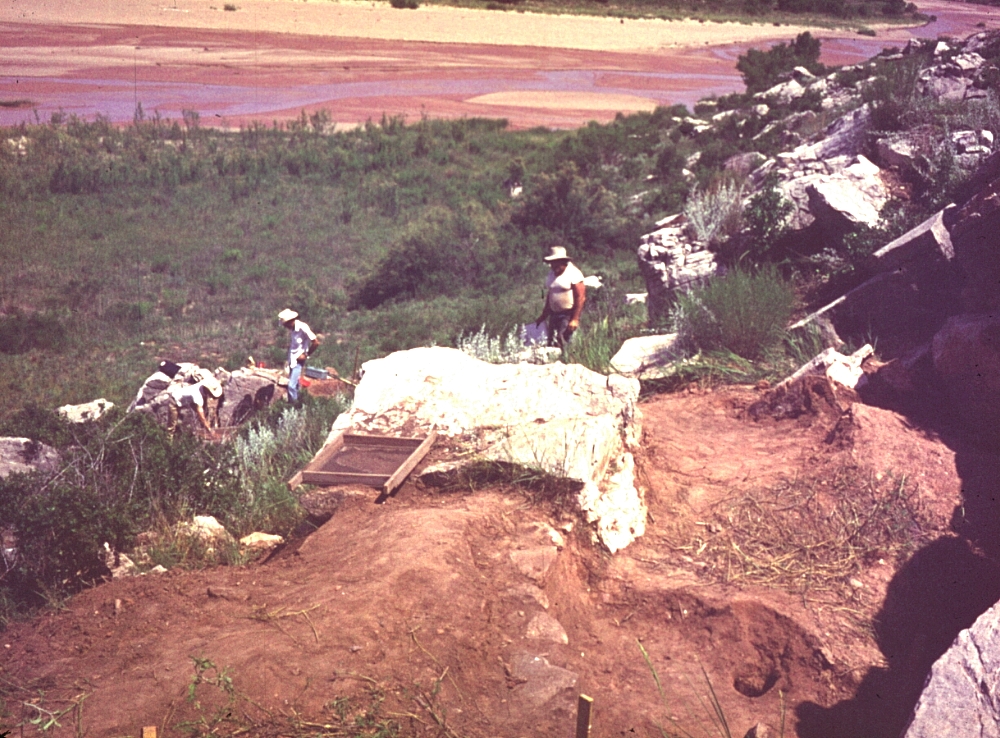
The Beaver Patrol working on the
terrace slope above Blue Creek. The kids found lots
of discarded Alibates tools and food remains among the
rocks.
|
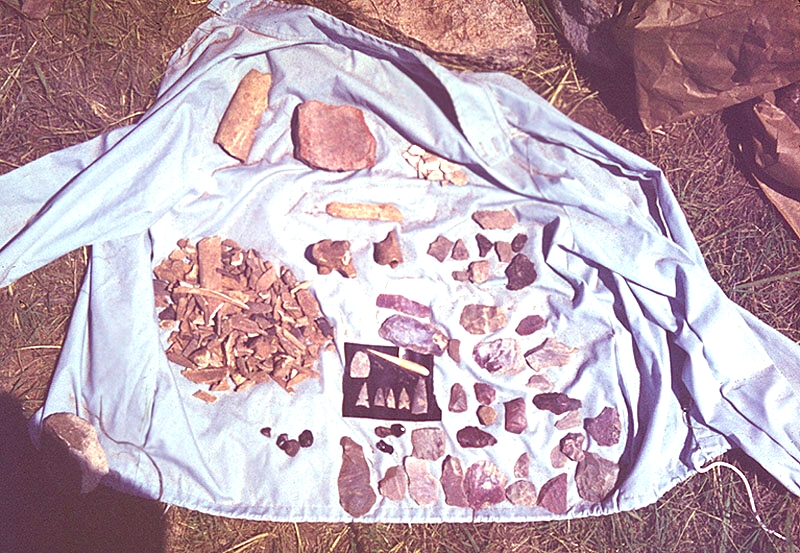
Typical artifacts from the excavations.
The flaked tools are all of Alibates material.
|
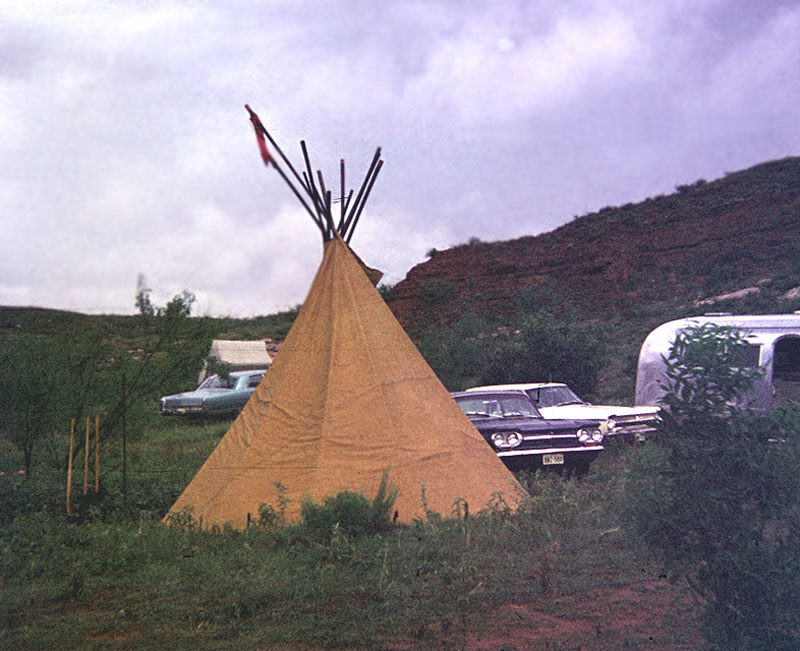
Dr. Jack Hughes' teepee, a familiar
site at many TAS field schools.
|
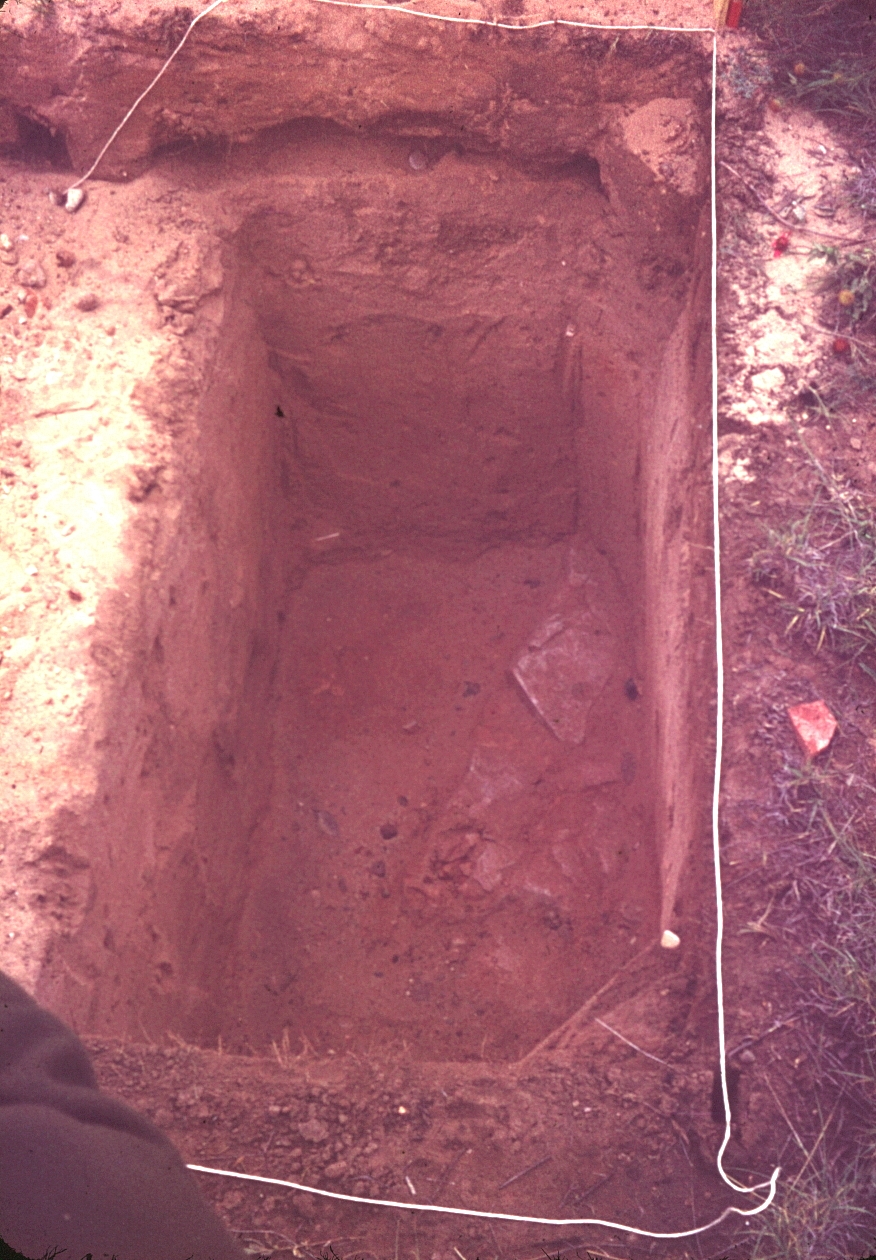
A deep excavation reveals a layer of slabs
of limestone at the bottom.
|
|
By Milton Bell
Photos by Wallace Williams
A view of recreation area from the dam
and typical terrain.
The Texas Archeological Society's 1969 field school
will be remembered in a single word: cold! Temperatures got down
into the 40s at night during that week, and few of us were prepared
for that kind of weather in June. I remember that the owners of
a store over in Dumas brought out a bunch of their winter clothes
from the previous season to sell, and they did a land-office business.
Fortunately, the cold spell lasted only a few days and we were able
to enjoy the beautiful scenery and interesting excavations. Everyone
who participated felt like they discovered something, a lot of it
relating to the Antelope Creek occupations—Borger Cordmarked
pottery, bone tools, and Alibates lithics.
Excavations atop the terrace overlooking Blue Creek.
I had been assigned to the Beaver Patrol—the
kids group—along with the late Emmett Shedd of Post.
We were staked out on a steep slope on a terrace above Blue
Creek. There were lots of falling rocks, sliding dirt, and
the occasional tumbling child. The natural area around us
was so compelling, we sometimes had difficulty keeping the
kids focused on archeology. One of the patrol members found
a big snapping turtle in the creek, and another time we watched
an 8-inch-long centipede emerge from a hole in the middle
of our excavation unit.
Meanwhile, the adults went about their investigations
in other parts of the site. The photos shown here were taken
by the late Dr. Wallace (Wally) Williams, an osteopathic doctor
at the V.A. hospital in Temple, Texas. He and his wife were
enthusiastic supporters of TAS and a mainstay at TAS field
schools. Dr. Williams was a genuinely gentle man who enjoyed
having friends drop by his VW camper to enjoy a “medicinal
margarita" after a hard day's work. I remember him as
quick to volunteer and very pleasant to work with. One of
his "signatures" was a well-shellacked cardboard
Shiner Beer case that held all his field equipment. He also
had a very good "cure" for those Saturday mornings
following Friday night parties! Over the course of his 24
seasons of TAS field schools he managed to take thousands
of pictures of people, excavations, camp sites, artifacts
and anything else that caught his eye. His collection of over
3000 color slides is now housed at the Texas Archeological
Research Laboratory.
For more information on the Texas Archeological
Society and annual field schools, visit www.txarch.org/.
A cache of awl "blanks" made of split deer metapodials,
or lower limb bones. Each blank would have produced two
awls, pointed objects used for sewing or puncturing hide
or other materials.
|
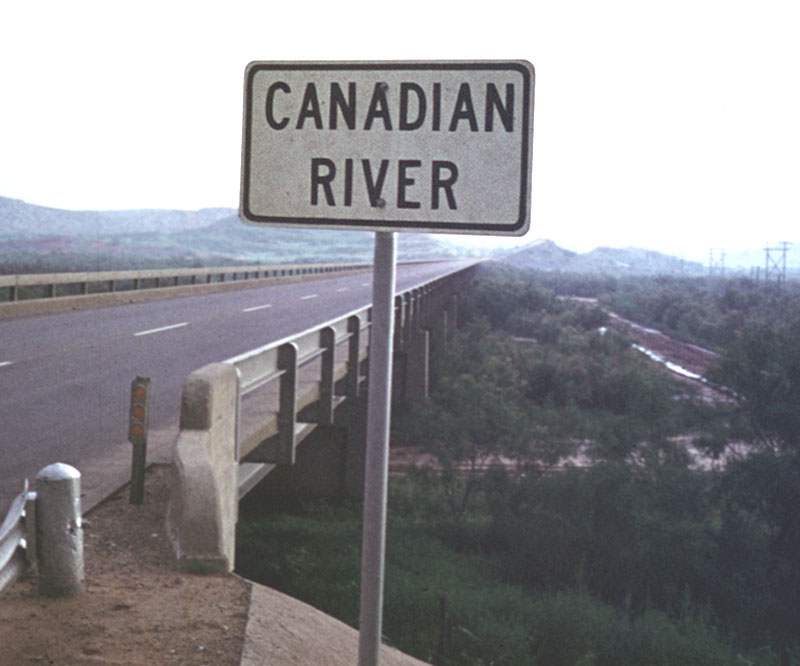
The Canadian River Bridge near Sanford
Reservoir (today Lake Meredith Recreation area) and
typical topography.
|
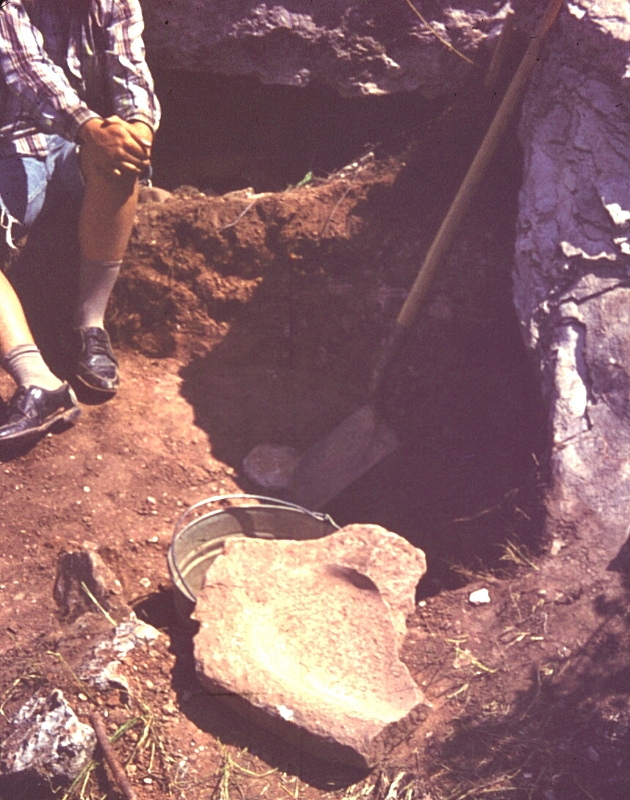
This broken metate was found by the
Beaver Patrol.
|

Large limestone slabs on edge strongly
suggest buried pit-house walls.
|
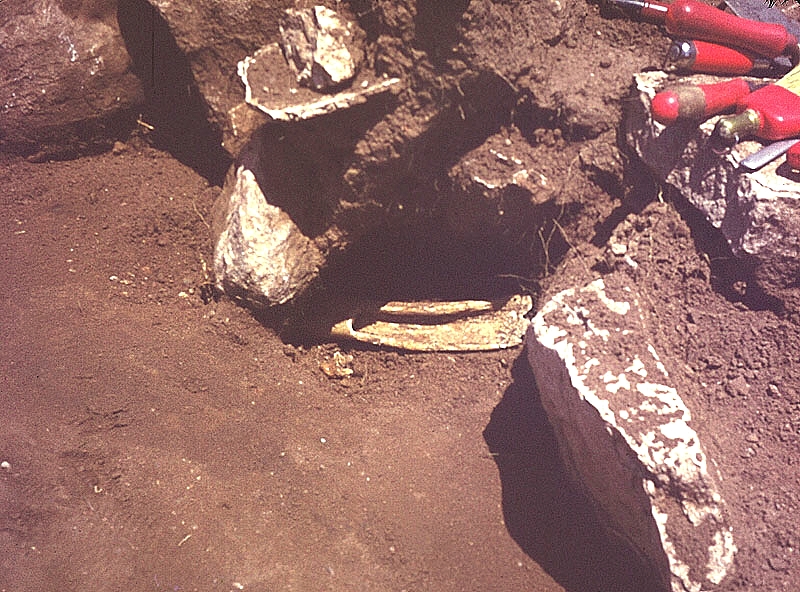
A bone digging tool exposed in an
excavation unit.
|
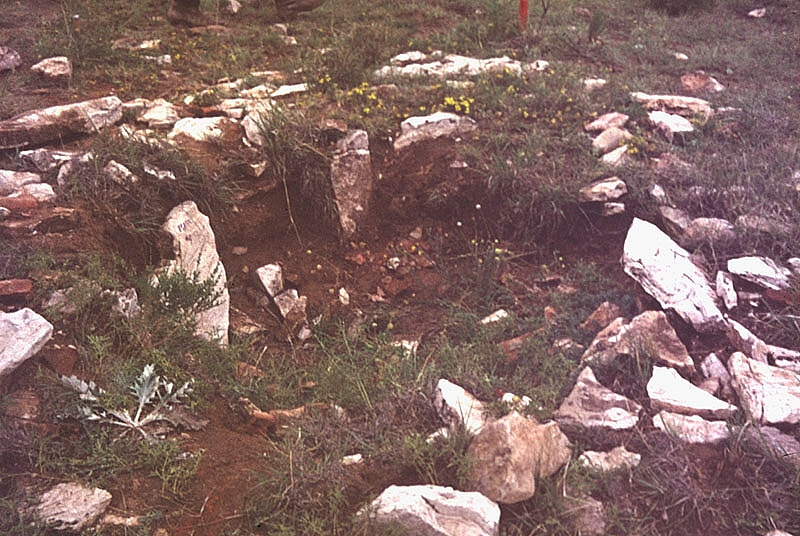
View of a slab-lined pit.
|
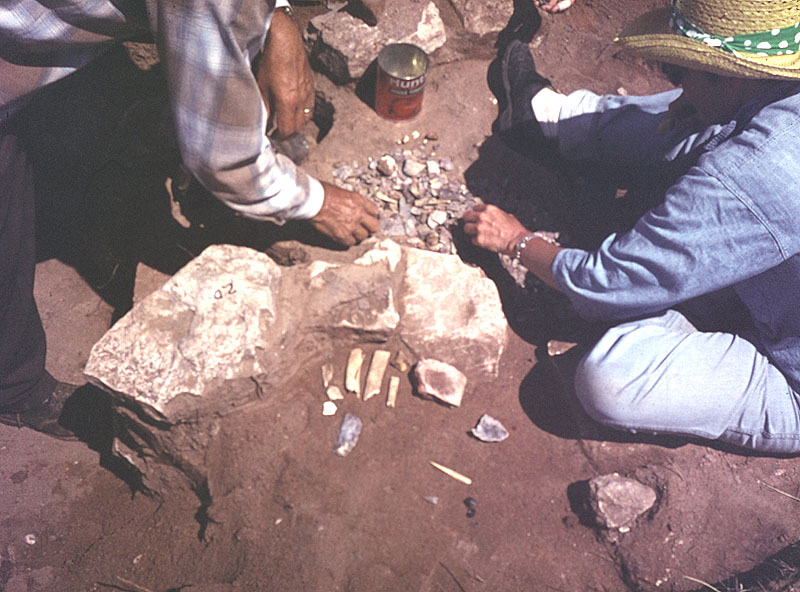
Cleaning a concentration of flakes and bone fragments. |
|